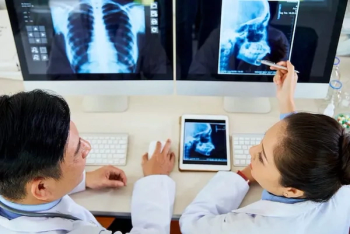
Post-COVID-19 Imaging Surge, Managing Blood Clots with Imaging, Singapore's "Touch Me Not" Policy, and the COVID-19 Impact on Breast Imaging
Diagnostic Imaging's Weekly Scan, April 24, 2020
Whitney Palmer: Welcome back to Diagnostic Imaging’s Weekly Scan with continuing coverage of COVID-19 and the industry’s response to the pandemic. I’m Whitney Palmer, senior editor.
As imaging continues to play a vital role in managing patients with COVID-19 infection, the U.S. Food & Drug Administration
Throughout the country, this week, we saw the national conversation begin to turn toward a relaxing of stay-at-home restrictions. As more locations begin to walk down this path, it could mean you’ll see a return to normalcy with your imaging procedures and patient volumes. Are you ready to handle the influx of postponed patient appointments and scan? Researchers from the Netherlands offered advice, based on their decisions, in the
But, we’re not out of the woods yet with COVID-19. And, so far, there’s been very little guidance or details on how to – and under what circumstances – you should image children who either have the virus or are suspected of being infected. Because there is a greater concern about radiation exposure with younger patients, an international group of experts from six countries, including the United States, developed a consensus document published in
More evidence is emerging that COVID-19 is more than a pulmonary disease. There’s a significant vascular component that is tired directly to patient prognosis and outcomes. And, imaging can play a vital role in the detection and management of the deep vein thromboses and pulmonary emboli that can result from infection. Researchers from the Netherlands published evidence-based guidance in
As imaging needs continue to grow in hospitals, so does the need for you to maintain a protective distance to safeguard yourself and your patients. Singapore General Hospital has adopted a “touch me not” stance where they’ve employed several tactics to control viral transmission. Work groups that rotate through patient environments together, restrictions and limitations on meal times, and a new patient appointment model that tracks a patient’s arrival down to the minute are a few of their strategies outlined in the
And, finally, this week, Diagnostic Imaging spoke with Dr. Susan Holley, co-director of breast services at Wake Radiology, part of Rex Healthcare in the University of North Carolina system. Dr. Holley shared with us the experience her clinic has had with reduced imaging volumes and how she and her colleagues have re-allocated their skills while most breast imaging services have been put on hold during the pandemic. She also offered her insights on how COVID-19 could have a long-term impact on how breast imaging services are provided in the future. Here’s what she had to say.
Visit DiagnosticImaging.com for more on these stories and other news and expert insights. Thanks for watching the Weekly Scan.
Newsletter
Stay at the forefront of radiology with the Diagnostic Imaging newsletter, delivering the latest news, clinical insights, and imaging advancements for today’s radiologists.



























